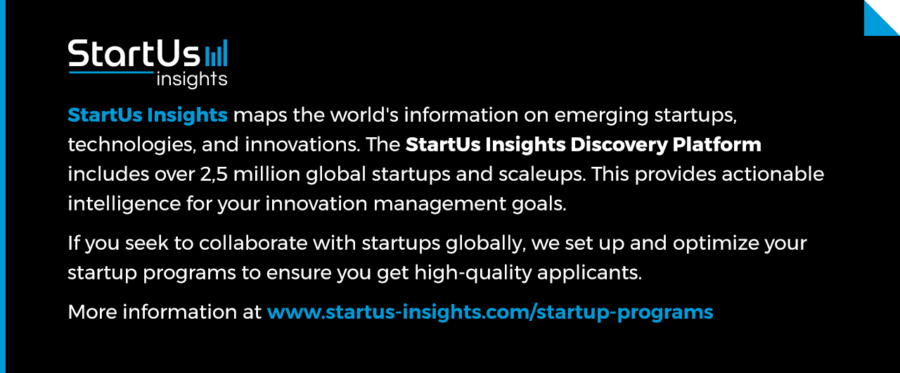Organizations such as large corporations monitor promising startups for their open innovation goals. One way they monitor and collaborate with such startups is through startup programs. In recent years, driven by the growth of remote collaboration, many of these startup programs have moved to a virtual format. By going virtual, organizations are able to reduce the cost of these programs considerably and, thereby, attract more high-quality startups. However, there are benefits to onsite startup programs such as better opportunities for mentoring. A semi-virtual startup program combines the best of both virtual and onsite startup programs.
In a semi-virtual program, startups continue to work where they are located but visit the host organization’s premises for a few days or weeks. In this article, learn their best practices when setting up semi-virtual startup programs and their benefits.
Semi-virtual Startup Programs: Best Practices
Bottom-up Approach
In a large company, there are many departments working relatively independently of each other. All departments have bottlenecks that innovations can solve. However, innovation managers who work centrally can often miss out on these bottlenecks. They, therefore, miss out on lots of potential areas where innovation can improve processes. In recent years, more companies are taking a bottom-up and integrated approach to innovation.
For instance, if you seek to engage in customer-centric innovation, you need to involve employees in customer-facing roles. A bottom-up approach seeks feedback from different business units to identify concrete challenges that impact business processes. As an innovation manager, this equips you to clearly define the objectives of your startup programs to identify the most relevant startups.
Global Scouting
Traditionally, companies relied on personal and professional networks to scout for startups. As a result, the startup programs were not diverse. Startups were primarily from the same geographical location, unvaryingly the same as the host company, or worked on similar technologies. Now, with semi-virtual startup programs, there is no need for companies to have such a myopic view of innovation.
Are you developing low-cost products or services? Look to markets that are known for frugal innovation practices. Trying to find new markets for your services? Look at the business models of startups from those markets. With global scouting, semi-virtual startup programs can cover the entire technology landscape. If you’re running a program next, data-driven approaches to find startups from particular regions or around the world.
Optimized Conversions
When a startup applies to a startup program, the host company assesses its fit for the program. This requires the investment of time and resources. If a startup program has poor conversion, innovation managers have to spend too much time finding the gems. However, semi-virtual startup programs are often backed by data-driven tools such as the StartUs Insights Discovery Platform. With firmographic data on over 2,5 million startups, it identifies highly-relevant startups according to a range of parameters provided by you.
For your semi-virtual startup program, optimized conversions save weeks, if not months, of person-hours. It also takes the hassle out of programs that run and evaluate startups throughout the year. This allows you to focus on what matters — nurturing strong relationships with the startups that make it to your program.
Benefits of Semi-virtual Startup Programs
1. Lower Costs
Traditionally, companies set up onsite incubators to nurture startups working on technologies they can incorporate for their research and development (R&D) goals. Hosting startups for months at their premises is a costly affair. Companies often invest to create new infrastructure, including in emerging markets, to host startups. However, with the growth of digitalization and remote technologies, it is becoming easier for companies to run these programs virtually.
Semi-virtual startup programs mitigate the costs for infrastructure development and hosting startups. This allows them to reduce operational costs of startup programs, thereby utilizing the money in other aspects.
2. Find Emerging Startups Globally
Onsite startup programs are an expensive affair for the participating startups as well. Moving base, or at least part of their team, to the corporate partner’s premises requires adjusting financial budgets. Moving is no longer an attractive prospect for many companies, especially those whose operations are majorly digital. On the other end, some startups stand to learn from visiting corporate premises.
By matching the aspirations of both kinds of startups, semi-virtual startup programs are attractive to startups from all geographical locations. Often, startups in different markets have different approaches to tackling problems. With a global applicant pool, semi-virtual startup programs are able to source innovation from around the world.
3. Higher Recall
For startups, semi-virtual startup programs present a lower barrier to entry compared to other startup-corporate collaborations. Consequently, such programs receive a lot of applicants. Receiving a large number of startup applicants increases your chances of landing a high-potential startup for your program.
With optimized conversion, startup programs target startups that are highly relevant to the business need that your program seeks to address. This leads to high recall. Any startup that is a good fit for your program knows about it, either organically or through outreach. At StartUs Insights, for example, we use a combination of direct and promotional outreach to invite the most relevant startups to your program.
Need Assistance with your Semi-Virtual Startup Program?
If you’re convinced of the merits of taking your startup program virtual, so are hundreds of other companies and your competitors. Today, companies around the world are competing for the attention of startups. To supercharge your semi-virtual startup program, we offer the following deliverables:
- Setup of Conversion-optimized Landing Page: leveraging our experience with SEO-optimized content, we set up the landing page of your startup program to attract more applicants.
- Direct Outreach: By using our propriety Discovery Platform covering over 2,5 million startups globally, we find the ones that fit your innovation needs and convert the most relevant ones into applications for your program.
- Promotional Outreach: By promoting your program through our magazine, social media channels, and 2 500+ online communities, we present it to promising startups globally. This also builds long-term awareness in the global innovation community
- Applicant Pre-screening: When, with our combined efforts, you receive more applicants than you can handle, our trained Analysts analyze startup data to pre-screen the startups with the highest potential.
Did we convince you to set up a semi-virtual startup program? Or are you running a program that is not getting the kind of applicants it deserves? Get in touch to know how our data-driven approach attracts highly relevant and promising startups to your startup program.




![Essential Guide to Digital Transformation in the Automotive Industry [2025 & Beyond]](https://www.startus-insights.com/wp-content/uploads/2024/12/Digital-Transformation-in-Automotive-SharedImg-StartUs-Insights-noresize-420x236.webp)




